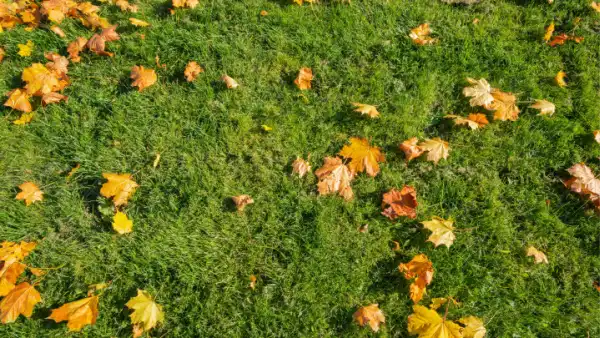
The Grounds Guys offer essential fall lawn care tips to prepare your yard for winter:
|
The leaves are turning colors, Sundays are reserved for football, and pumpkin-spiced lattes abound. That’s right — it’s fall. And while you may be tempted to snuggle into a cozy sweater or go leaf peeping (yes, this is a real thing), don’t forget about your lawn. As the seasons change, so do the needs of your grass. That’s why we’ve put together our best fall lawn care tips.
This fall lawn care guide is designed to help you prepare your lawn for winter dormancy and a successful spring green-up.
The best way of preparing your lawn for fall will depend on whether you plant warm-season grasses or cool-season grasses.
Warm-season grasses are most often found in warmer areas of the United States, like the southern states and the southern portion of California. These grasses peak in summer and go dormant in the fall. Common warm-season grasses include:
- Bermuda grass
- Centipede grass
- Zoysia grass
- Bahia grass
Cool-season grasses are typically found in the midwestern and northern parts of the U.S. and in many regions of Canada. These grasses peak in fall and include:
- Kentucky bluegrass
- Perennial ryegrass
Keep Mowing Your Lawn
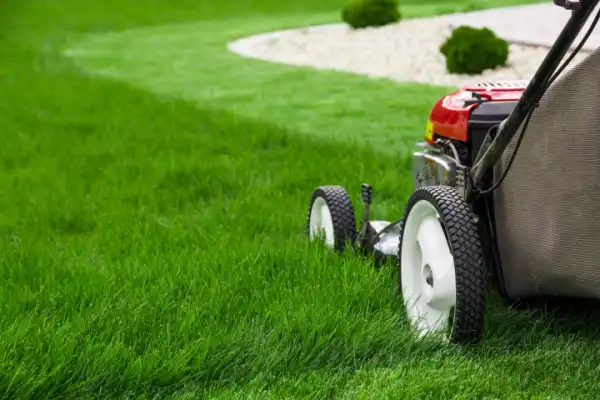
Keep mowing your cool-season lawn throughout the fall. Consider increasing your mower height to half an inch or a full inch. As daylight hours recede, grass with more leaf area will be able to absorb more sunlight. As winter approaches, cut your grass shorter again to help avoid fungal diseases.
Keep an eye on your warm-season lawn. When it stops growing in the fall, you can store your mower for the rest of the season.
Start Raking
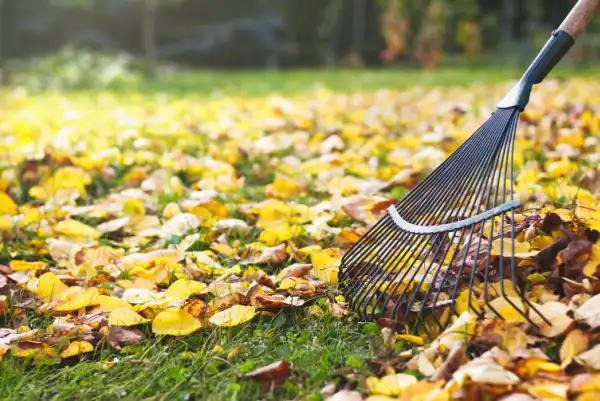
Colorful leaves are the symbol of autumn, but they’re no fun when they start piling on your lawn. Regularly raking to minimize leaf litter is essential, whether you have a warm-season or cool-season lawn.
A blanket of leaves on your lawn can block the nourishing sunlight your grass needs to survive the winter. They can also trap moisture, which is practically an invitation for fungal growth.
Aerate Your Lawn
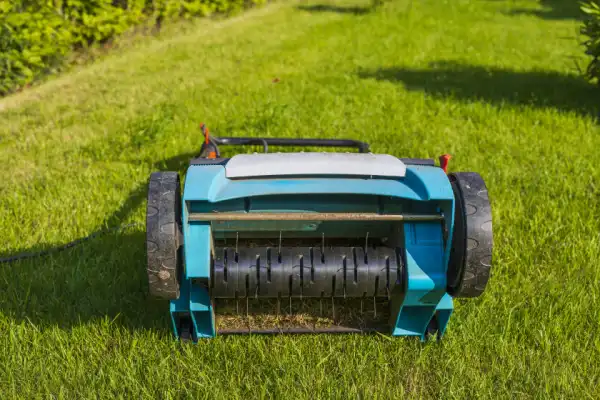
Soil can harden and become compacted during a long, hot summer. If you have a cool-season lawn, fall is the perfect time to aerate. Aerating simply means poking holes in your soil to allow water, oxygen, and nutrients easier access to your grass roots. (For warm-season lawns, aerating is best done in the spring.)
Fertilize Your Lawn
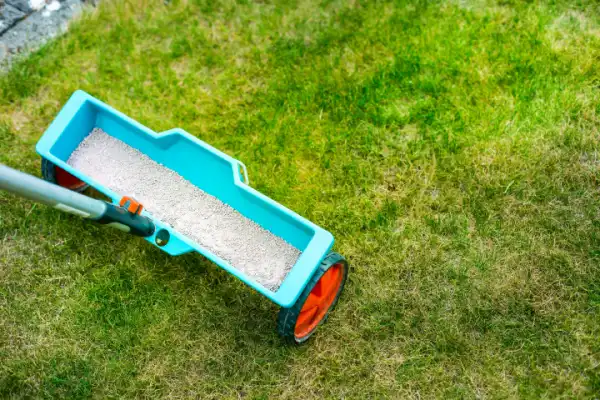
Feed your cool-season grass and help prepare your lawn for winter with a round of fertilization. For most cool-season lawns, the best time to fertilize is about six weeks before the frost, which usually means October or November.
No need to fertilize your warm-season lawn in the fall. Wait until the spring to bust out your favorite fertilizer.
Keep Weeds Out
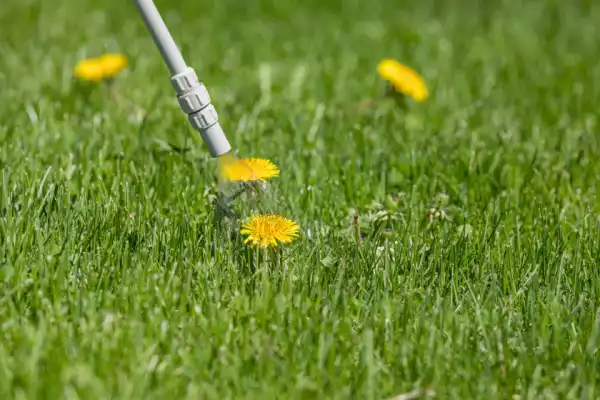
Perennial weeds, like dandelions and henbit, love to sneak into fall lawns. In many cases, seeds dropped in summer sprout in the fall. Warm-season lawns are especially vulnerable to weeds as they enter into their fall dormancy.
Choose your favorite weed killer and spray your lawn thoroughly. Performing weed control in the fall can also help prevent weeds from germinating next spring.
Consider Overseeding
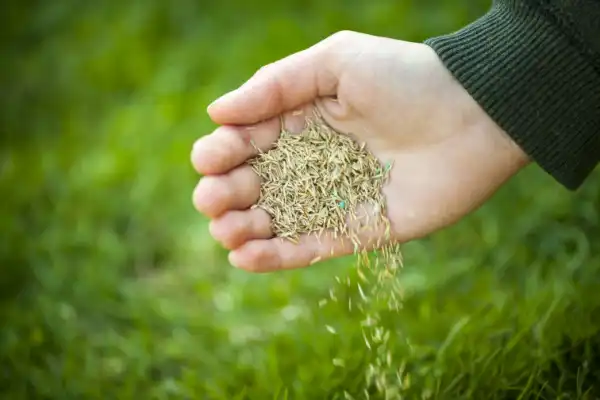
If you’ve got warm-season grass, you might not enjoy a brown lawn in the fall. If you want a lush, green lawn in the fall, consider overseeding with cool-season grass, like ryegrass.
Cool-lawn homeowners who notice bare or thin patches in their lawn may also want to overseed to add more thickness. Just make sure to overseed at least 45 days before the frost. This will give your seeds time to establish roots.
Adjust Your Irrigation
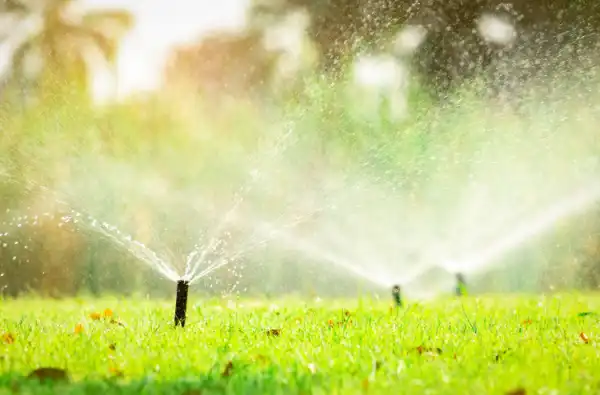
Whether you water your lawn with a hose, sprinkler, or automated irrigation setup, you’ll need to adjust your watering schedule throughout the year. Once your warm-season lawn stops growing, you can pause your watering efforts (unless you’ve overseeded your lawn).
Cool-season lawns will need water throughout the season, but as the weather cools, you can lower your watering frequency. Incorporate fall rain into your irrigation schedule to save on water and avoid overwatering your lawn.
Need Help With Your Fall Lawn Care?
If you’ve been wondering what to do with your lawn in the fall, we hope our fall lawn care tips helped answer your question. Unfortunately, you can’t sit back and relax when it comes to caring for your lawn in the fall season. Whether you have a warm-season lawn or a cool-season lawn, there are still plenty of seasonal chores to do.
Don’t have time to perform all the necessary seasonal activities to keep your lawn looking its best? Contact us! The Grounds Guys® offers seasonal care as well as ongoing lawn maintenance. Our knowledgeable teams will also provide you with tailored care recommendations that are right for your lawn. All of our work is backed by the Neighborly Done Right Promise™, which guarantees your satisfaction.
Ready to get started? Find The Grounds Guys location nearest you and request a free estimate today!